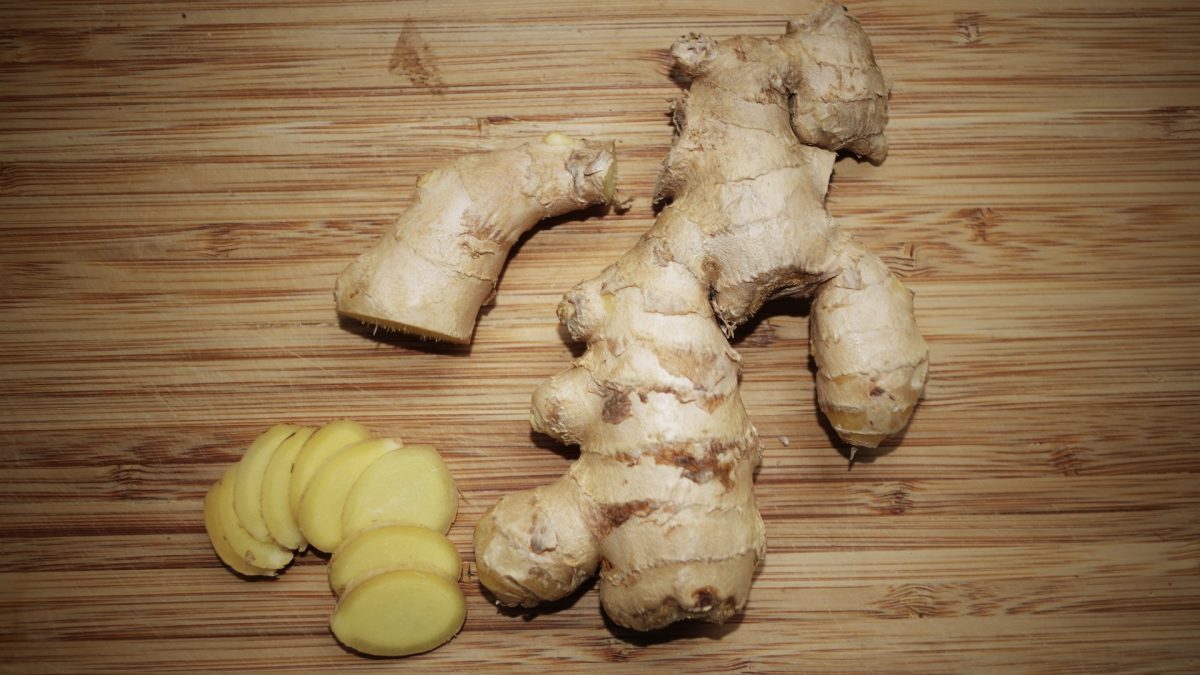If ginger is so effective against migraines and also helps with the pain of menstrual cramps, what about osteoarthritis? I explore this in my video Ginger for Osteoarthritis.
An all too common disorder, osteoarthritis produces chronic pain and disability. The first major study, published in 2000, showed no benefit of ginger extract over placebo, but that study only lasted three weeks. The next study, in 2001, lasted six weeks and, by the end, was able to show significantly better results compared to placebo. However, because the placebo did so well, reducing pain from the 60s down to the 40s on a scale of 1 to 100, ginger reducing pain further down into the 30s was not especially clinically significant, so an editorial in the official journal of the American College of Rheumatology concluded that “ginger should not be recommended at present for treatment of arthritis because of the limited efficacy.”
Since that time, there have been a few other trials that showed more impressive results, such that ginger is now considered “able to reduce pain and disability” in osteoarthritis. How does it compare to other treatments? Since osteoarthritis is a chronic disease, it’s especially important to weigh the risks versus the benefits of treatment. The commonly used anti-inflammatory drugs can carry serious cardiovascular and gastrointestinal risks. For example, nearly half of the osteoarthritis patients on drugs like ibuprofen were found to have major injuries to the lining of their small intestines. That risk can be reduced by taking additional medication to counteract the side effects of the first drug.
Ibuprofen-type drugs reduce our stomach lining’s ability to protect itself from stomach acid, so blocking acid production with a second drug can lower the risk. However, ginger can actually improve stomach lining protection. Indeed, at the kinds of doses used to treat osteoarthritis—about a quarter- to a half-teaspoon a day—ginger can be considered not just neutral on the stomach, but beneficial. So, ginger can be as pain-relieving as ibuprofen but without the risk of stomach ulcers.
What about topical ginger treatment, as in externally applying a ginger-soaked cloth or patch to the affected joint? In a controlled study, compress versus patch, both showed remarkable and lasting pain relief for osteoarthritis sufferers. What was missing from the study, though, was a control group: There was no placebo patch. I don’t care if ginger has been applied externally to painful joints for a thousand years. The placebo effect has been shown to be remarkably effective in osteoarthritis in providing pain relief. So, until there’s a controlled study on topical ginger, I’m not going to believe it.
There wasn’t such a study until… 24 men stuck ginger slices on their scrotum.
Men with inflamed testicles applied six to ten paper-thin slices of ginger “over the affected testes,” and, evidently, the ginger group healed nearly three times faster than the control group. Unfortunately, the original source is in Chinese, so I can’t get further details, as is the only other controlled study on topical ginger I could find, whose title apparently translates to “Evaluation of point plaster therapy with ginger powder in preventing nausea and vomiting occurred after platinum-based interventional chemotherapy.” We know ginger powder taken orally can be a miracle against chemo-induced vomiting, but what about stuffing it in your belly button?
The external application of ginger powder to the so-called point of Shenque, which is the navel, was compared to the control group, who got potato powder in their belly buttons instead. The ginger group evidently had significantly less nausea and vomiting. Unfortunately, only the abstract is in English, so I can’t tell how effectively the researchers blinded the patients to the treatment. Presumably, it would be easy to tell whether or not you were in the ginger or placebo group simply by the smell, but perhaps the researchers controlled for that? Until we know more, I would suggest those who want to try ginger use it in the stomach, rather than on the stomach.
What other dietary interventions can help with arthritis? See, for example:
- Why Do Plant-Based Diets Help Rheumatoid Arthritis?
- Gout Treatment with a Cherry on Top
- Turmeric Curcumin and Osteoarthritis
- Turmeric Curcumin and Rheumatoid Arthritis
- The Inflammatory Meat Molecule Neu5Gc
- Sesame Seeds for Knee Osteoarthritis
- Dietary Cure for Hidradenitis Suppurativa
What else can ginger do? Check out:
- Reducing Radiation Damage with Ginger and Lemon Balm
- Which Spices Fight Inflammation?
- Ginger for Migraines
- Natural Treatments for Morning Sickness
- Ginger for Nausea, Menstrual Cramps, and Irritable Bowel Syndrome
- Benefits of Ginger for Menstrual Cramps
- Ground Ginger to Reduce Muscle Pain
If the placebo effect is really that powerful, should doctors prescribe them? They already do. See my video The Lie That Heals: Should Doctors Give Placebos? for more on this.
In health,
Michael Greger, M.D.
PS: If you haven’t yet, you can subscribe to my free videos here and watch my live presentations:
- 2012: Uprooting the Leading Causes of Death
- 2013: More Than an Apple a Day
- 2014: From Table to Able: Combating Disabling Diseases with Food
- 2015: Food as Medicine: Preventing and Treating the Most Dreaded Diseases with Diet
- 2016: How Not To Die: The Role of Diet in Preventing, Arresting, and Reversing Our Top 15 Killers
- 2019: Evidence-Based Weight Loss
